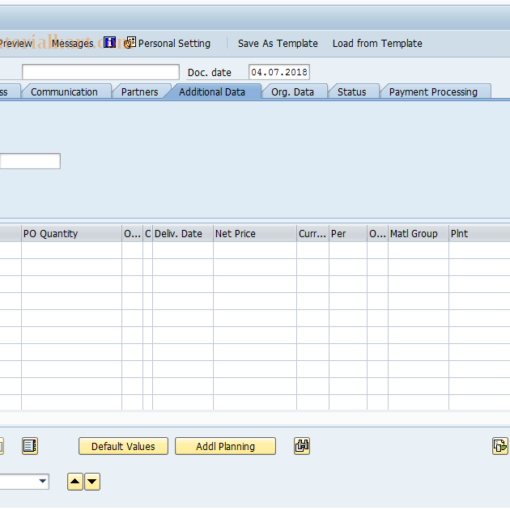What is SAP in the food industry?
SAP in the food industry refers to the implementation of SAP software solutions to optimize and streamline various processes such as supply chain management, production planning, quality control, sales, and financial management. It helps food companies effectively manage their operations, ensure regulatory compliance, improve efficiency, and maintain consistent product quality.
SAP Food and Beverage
Groceries and other food and beverage services cost US consumers, corporations, and government agencies $1.71 billion in 2018. Thin margins, ongoing manufacturing process innovation, and more stringent laws are problems in our global economy, as those in the food industry can confirm. Whatever their size, food and beverage manufacturing enterprises must constantly run at full capacity and look for ways to grow; many are succeeding thanks to enterprise resource planning (ERP) systems like the SAP food and beverage solution.
With an increase in customers, food processing businesses are expanding daily. Food product demand is rising, and the final procedure for meeting this demand is producing high-quality items. You may produce high-quality food products while overcoming commercial issues with the support of SAP’s robust solution. A single system unifies the essential steps from manufacture through distribution.
Specific industry requirements must be met to operate a business effectively. By tracking and keeping an eye on all crucial production-related tasks, profit is gradually increased. SAP solution simply means it uses more of the resources at its disposal to execute tasks in a technically automated manner.
The international food and beverage business has largely prospered in recent years, attracting an increasing number of consumers. The global demand for this industry is skyrocketing, which is causing food prices to climb quickly. The main difficulties this industry faces are the rising need for innovation and variety, limited profit margins, product traceability, and government regulation of product quality. All facets of industry manufacturing and distribution are aided by SAP Business One for Food and Beverages. This ERP program considers the current, unique needs of the food industry and offers solutions tailored to that sector.
SAP Food and Beverage Solution: What Is It?
With the SAP Food and Beverage solution, complexity is managed, compliance is attained, processes are made simpler, and a growth platform is offered.
For firms with a recipe-driven business model, SAP Business One for Food and Beverage provides a platform to address your business concerns. Its potent operations allow:
- comprehensive “field-to-fork” functionality with extensive product and batch traceability.
- support for businesses that follow recipes and require more than just a basic bill of materials. Formula management, yield and scrap, byproduct, and co-product capabilities are included in this.
- Integral quality control allows you to specify quality checkpoints at various stages of your workflow.
- To optimize your manufacturing process, use strong scheduling solutions that provide a clear, graphical scheduling board.
- automated “smart” forecasting that takes into account the seasonal influences on your market.
- complete control over product declarations, nutritional information, ingredient characteristics, and classifications that are not typically found in conventional, generic business systems.
- In the industries that process food, recipes are crucial. A tasty result is produced when the elements are combined properly. Technical software integration provides information on each recipe’s ideal proportions.
- SAP enables product management scheduling, ensuring that production is finished on schedule. Using a software package significantly increases client happiness.
- Planning out the necessary resources helps to boost production and generate high revenue.
- Active warehouse management makes it simpler to identify inventory, allowing for better upkeep of necessary goods.
- The barcode system that is affixed to every food item allows for the tracking and monitoring of product locations, necessitating the analysis of precise raw materials.
- More efficient use of resources results in better visibility into the production process, which helps to evaluate current commercial trends.
- Since they are so crucial to generating high-quality food, scrap and co-products are effectively managed.
- Data are gathered on crucial tasks, and papers specific to the creation of each product are kept separately in a database system.
BENEFITS
- Favorable cost calculation.
- Accountability of the entire supply chain from vendor to consumer.
- flexible margin computation across multiple levels.
- Simple by-product and co-product management.
- an improvement in consumer satisfaction.
- adherence to GMP criteria and industry-specific legal requirements.
- adherence to GMP criteria and industry-specific legal requirements.
- Clear visibility into sales operations is provided through the tracking of the supply chain from vendors to distributors and customers.
- With the help of the SAP solution, everything from product production through packaging and shipping as well as stock management monitoring is automated.
- From processing to packaging and delivery that represent its quality standard, food goods must be prepared in compliance with governmental norms and regulations.
- The synchronization of cash flow and work flow systems in response to demands in a cutthroat corporate environment modulates organizational pride.
- A system with SAP integration can generate recipes in accordance with consumer likes and preferences by identifying current trends based on feedback from customers.
- In order to maintain balance sheet reports and frame monthly and annual reports, financial statements are monitored and reported.





